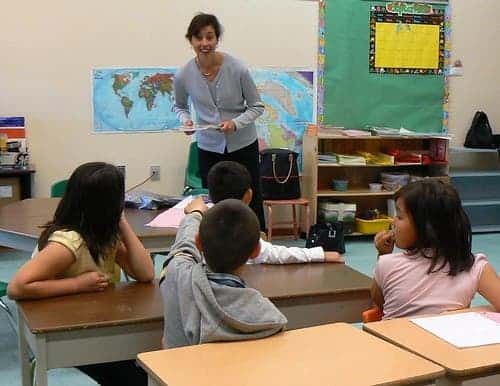A new study analyzed a claim that seems to be quite popular with the nationalists: the idea that immigrant students drain resources from local students, reducing their performance.
Not only was this found to not be true, but the opposite actually stands: immigrants in the classroom seem to improve performance all across the board.

The case against immigration follows one general belief: that immigrants take away resources from the local population, reducing performance and wellbeing. Researchers are BYU and the University of Albany wanted to put that idea to the test in the classroom and see if it stands.
“The current political environment shows a big push against immigration that in many ways is driven by an argument that immigrants will pull resources from the host country,” said Mikaela Dufur, a sociology professor at BYU. “The thought is if you want to protect the host country you need to really limit immigration to protect those resources.”
They analyzed data from 260,000 students from more than 10,000 academic institutions over 41 high-income countries, focusing on three groups: native-born students (parents and students born in that country), second-generation students (students born in that country but parents born in another) and first-generation students (students born outside of the current country).
The groups were also more homogeneous the more immigrants there were, which is a positive indicator for overall classroom performance. In countries with lower immigration rate (<15%), immigrants perform about 15 to 20 points below native-born students. Where immigration lies between 15% and 25%, native-born students and immigrants are within 10 points of each other, and where 25% or more are foreign-born, all three groups perform within five points of each other.
“We were pleasantly surprised it wasn’t just a neutral effect for the native kids but that they actually did better with more immigrant kids in their class,” Dufur said.
The school is probably one of the best environments to put the anti-immigration idea to the test because children are so vulnerable to resource misallocation.
“We were really interested in looking at education because we thought kids would be the most vulnerable citizens of the host country,” Dufur said. “If you were going to drain resources from kids, you should really see an effect of that and you might want to have stricter immigration policies to protect them.”
“The findings indicate that immigrant students perform similarly to native-born students when considering other contextual factors, with socioeconomic status moderating the effect of immigrant status. Furthermore, all students, immigrant and nonimmigrant students alike, benefit academically from more immigration,” the team concludes.
The fact that this was not the case, and that immigration actually improved academic performance should be an important indicator for policymakers, Dufur says. The positive aspects of having a rich migratory population should be considered when drafting immigration policies and restrictions, they conclude.
The study “The Influence of Foreign-born Population on Immigrant and Native-born Students’ Academic Achievement” has been published in Socius.



